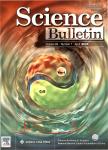Phenotypic analysis of the medullary-type CD4^-CD8^+ thymocytes in mice
Phenotypic analysis of the medullary-type CD^4-CD8^+ thymocytes in mice作者机构:Department of ImmunologyBeijing Medical UniversityBeijing 100083China Institute of ZoologyChinese Academy of SciencesBeijing 100080China
出 版 物:《Chinese Science Bulletin》 (CHINESE SCIENCE BULLETIN)
年 卷 期:2000年第45卷第3期
页 面:232-237页
核心收录:
学科分类:0710[理学-生物学] 07[理学] 071009[理学-细胞生物学] 09[农学] 0901[农学-作物学] 090102[农学-作物遗传育种]
主 题:CD^4 CD8^+ medullary-type thymocytes cell phenotype phenotypic differentiation.
摘 要:Phenotypic analysis of the medullary-type CD4 CD8+ (CD8SP) thymocytes has revealed phenotypic heterogeneity within this cell population. The phenotype of mature peripheral CD8+T cells is TCRαβ+CD3+Qa-2+HSA3G11 6C10 , whereas in the medullary-type CD8SP thymocytes, 20% are Qa-2+; 33%, HAS ; 30%, 3G11 ; and 70% are 6C10 . The disparate expression patterns of these four cell surface markers suggest that medullary-type CD8SP thymocytes may undergo phenotypic maturation process. According to the distribution of these four celi surface markers, six subgroups of CD8SP thymocytes have been identified. The precursor-progeny relationship along with developmental pathway is postulated as follows: 6C10+HSA+3G11 Qa-2 - 6C10+HSA+ 3G11+Qa-2 6C10 HSA+3G11+Qa-2 -6C10 HSA 3G11 +Qa-2 -6C10 HSA 3G11 Qa-2 -6C10 HA S 3G11 Qa-2+, the cells inthe last subgroup exit the thymus and home into periphery.



